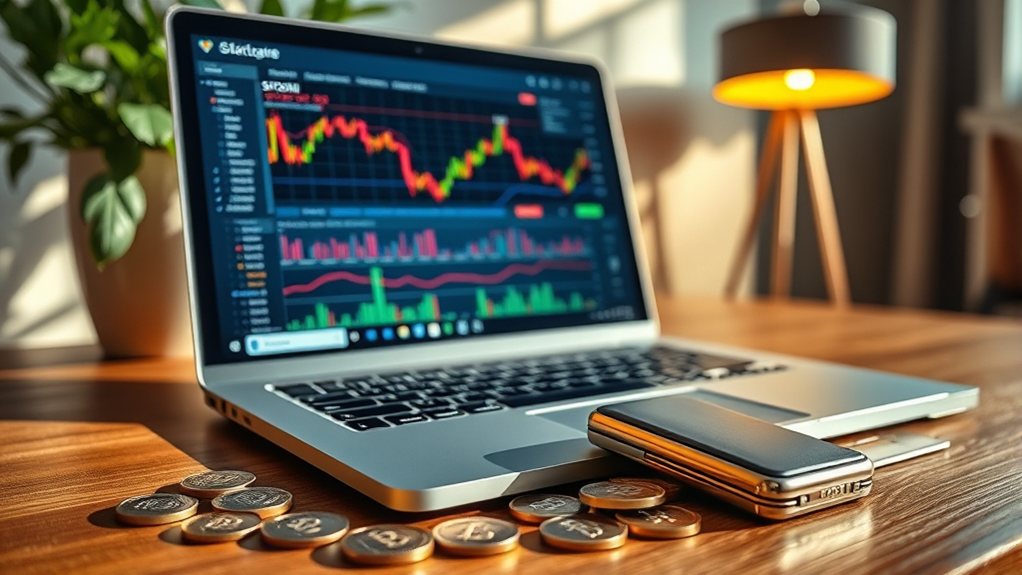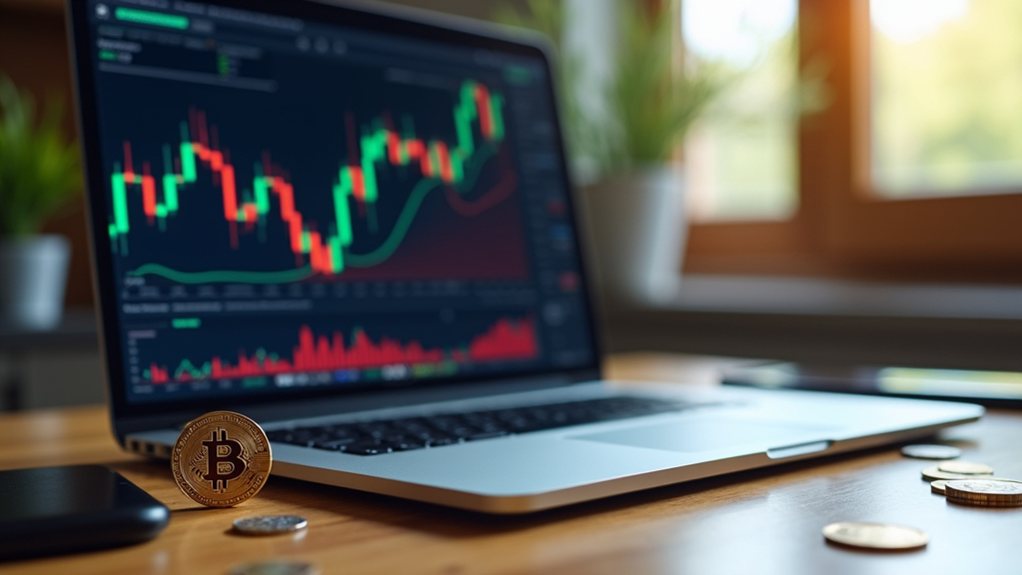Buying Satoshi (the smallest unit of Bitcoin) requires selecting a cryptocurrency exchange like Coinbase or Binance. Users need to create an account, complete identity verification, and set up security features. They can then fund their account using bank transfers, credit cards, or other payment methods. When ready, they navigate to Bitcoin trading and specify how many Satoshi they want to purchase. Secure storage options include hardware wallets for enhanced protection. The process becomes simpler with each transaction.

Steering through the world of cryptocurrency starts with knowing how to purchase Satoshi, the smallest unit of Bitcoin. Investors begin this process by comparing cryptocurrency exchanges. They look at fees, security features, and user reviews. Exchanges that support Satoshi trading, operate in the investor's country, maintain good liquidity, and comply with regulations are ideal choices.
Once an exchange is selected, creating an account is the next step. Investors sign up using an email address and password. They must complete identity verification, known as KYC (Know Your Customer). Adding two-factor authentication increases account security. Before trading can begin, users review the exchange's terms of service and add funds to their accounts.
Setting up your exchange account is a critical security step that protects both you and your future investments.
Payment methods vary across platforms. Bank transfers typically have lower fees but take longer to process. Credit and debit cards offer instant purchases but often charge higher fees. Some exchanges accept PayPal, while peer-to-peer platforms enable direct transactions between users. Cryptocurrency deposits work for those who already own digital assets.
After funding their accounts, investors navigate to the Satoshi market. They find trading pairs like SATS/USD or SATS/BTC. The current market price, trading volume, and order book provide valuable information. Many traders analyze price charts to understand historical trends. Currently, the two main platforms where investors can purchase SATOSHI are CoinW and NovaDAX. Some set price alerts to notify them when Satoshi reaches desired price levels.
Placing a buy order happens next. Investors choose between market orders (instant execution at current price) or limit orders (execution when price reaches a specified level). They enter the amount of Satoshi they want to buy, review fees and total cost, confirm details, and monitor the order in real-time.
After purchasing Satoshi, secure storage becomes important. Many investors transfer their Satoshi to personal wallets rather than keeping them on exchanges. Hardware wallets offer enhanced security for long-term storage. Popular options like Wirex and Trezor provide robust protection against potential security breaches. Users enable additional security features, create backups of wallet seed phrases, and keep wallet software updated. Understanding the blockchain technology behind Satoshi helps investors appreciate why proper wallet security is essential for protecting their digital assets.
Tracking investments completes the process. Investors monitor Satoshi's price movements through various platforms and tools. They follow news and developments related to Satoshi and Bitcoin. Some practice dollar-cost averaging, making regular purchases regardless of price. They periodically review their investment strategy based on market conditions.
The market for Satoshi continues to evolve as more people recognize its potential. The process of buying Satoshi has become more streamlined over time, allowing both newcomers and experienced investors to participate in this growing digital economy. As cryptocurrency infrastructure improves, accessing Satoshi becomes increasingly convenient for the average person.
Frequently Asked Questions
Is a Satoshi the Same as Buying Bitcoin?
Yes, buying satoshis is the same as buying Bitcoin. A satoshi is simply the smallest unit of Bitcoin, like cents are to dollars.
One Bitcoin equals 100 million satoshis. When someone purchases satoshis, they're buying a fraction of Bitcoin through the same exchanges and methods.
There's no separate market for satoshis – they're just a way to measure very small amounts of Bitcoin.
What's the Smallest Amount of Satoshi I Can Purchase?
The smallest amount of satoshi someone can purchase varies by platform.
Technically, 1 satoshi (0.00000001 BTC) is the smallest unit, but many exchanges have higher minimums.
Coinbase requires about $2 worth of Bitcoin.
Ka.app sets a 0.0001 BTC minimum.
Transaction fees often make very small purchases impractical.
Some platforms require $1-2 minimums due to processing costs and regulatory requirements.
Can I Store Satoshi in a Regular Crypto Wallet?
Yes, Satoshi can be stored in regular crypto wallets.
Since Satoshi is simply a smaller unit of Bitcoin (1 Bitcoin = 100,000,000 Satoshi), any wallet that supports Bitcoin automatically supports Satoshi.
Popular wallets like Ledger, Trezor, Exodus, and Trust Wallet all allow users to view and manage their Bitcoin holdings in Satoshi units.
These wallets typically display balances in both Bitcoin and Satoshi denominations.
How Does Satoshi Value Fluctuate Compared to Bitcoin?
Satoshi value fluctuates at exactly the same percentage rate as Bitcoin. When Bitcoin's price rises or falls by 10%, a satoshi's value changes by the same 10%.
The only difference is scale. Since one satoshi equals 0.00000001 BTC, its dollar value is always 100 million times smaller than Bitcoin's.
This fixed relationship guarantees satoshis maintain perfect price alignment with Bitcoin regardless of market conditions.
Are There Fees Specific to Buying Small Satoshi Amounts?
Buying small amounts of satoshis can face higher relative costs. Exchanges typically charge percentage-based fees (0.1%-0.5%), which apply equally to all purchase sizes.
However, minimum order requirements ($5-$20) may prevent tiny purchases. Network transaction fees don't scale with amount, so moving small satoshi amounts isn't cost-effective.
Some services offer solutions like batching multiple small purchases or using Lightning Network for micro-transactions with lower fees.










